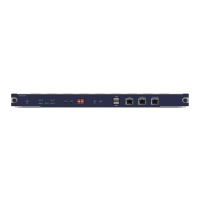ZXR10 GER (V2.6.03) General Excellent Router User Manual Volume-I
320 Confidential and Proprietary Information of ZTE CORPORATION
traffic, given the constraints imposed by backbone capacity and
topology.
MPLS traffic engineering:
Enhances standard IGPs, such as IS-IS or OSPF, to
automatically map packets onto the appropriate traffic flows.
Transports traffic flows across a network using MPLS
forwarding.
Determines the routes for traffic flows across a network
based on the resources the traffic flow requires and the
resources available in the network.
Employs "constraint-based routing," in which the path for a
traffic flow is the shortest path that meets the resource
requirements (constraints) of the traffic flow. In MPLS traffic
engineering, the traffic flow has bandwidth requirements,
media requirements, a priority versus other flows, and so on.
Recovers to link or node failures that change the topology of
the backbone by adapting to a new set of constraints.
The IETF has the following RFCs related to the MPLS TE:
RFC3209: RSVP-TE: Extensions to RSVP for LSP Tunnels
RFC3630: Traffic Engineering (TE) Extensions to OSPF
Version 2
MPLS Engineering Working
MPLS is an integration of Layer 2 and Layer 3 technologies. By
making traditional Layer 2 features available to Layer 3, MPLS
enables traffic engineering. Thus, you can offer in a one-tier
network what now can be achieved only by overlaying a Layer 3
network on a Layer 2 network.
MPLS traffic engineering automatically establishes and maintains
the tunnel across the backbone, using RSVP. The path used by a
given tunnel at any point in time is determined based on the
tunnel resource requirements and network resources, such as
bandwidth.
Available resources are flooded via extensions to a link-state
based Interior Protocol Gateway (IPG).
Tunnel paths are calculated at the tunnel head based on a fit
between required and available resources (constraint-based
routing). The IGP automatically routes the traffic into these
tunnels. Typically, a packet crossing the MPLS traffic engineering
backbone travels on a single tunnel that connects the ingress
point to the egress point.
MPLS traffic engineering is built on the following IOS
mechanisms:
One-Tier
Network
RSVP
Tunnel Paths

